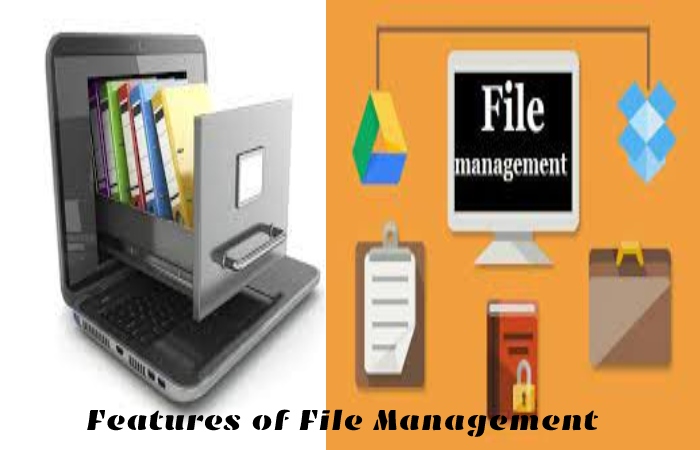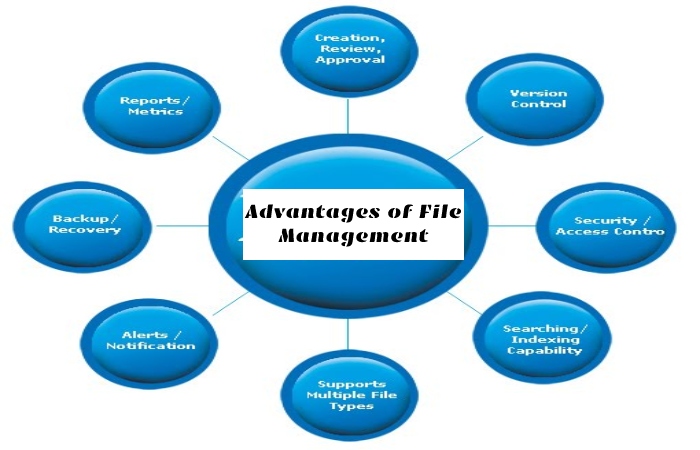What is File Management?
File management is the practical, theoretical study of the principles and procedures concerning the functions of archives. In a broader definition, we can say that file management is related to the good and controlled administration of information in an organization.
Implement File Management
It serves to facilitate the work with the documentation produce in the company. Everyone involved with the documents in the archive should know what records to keep, when, how, and where. Likewise, you must know where the documentation is when you need it.
It helps us to have accessibility and transparency in information. In addition to this, it also provides us with the exchange and reproduction of resources, avoiding duplicates, unnecessary data, or loss of data.
We can keep the memory of the organization alive, as Atherton said in 1983: “except permanent peace, nothing could contribute more to achieving the ends of developing societies and making this a better world to live in than a transfer of scientific information. And effective technology with a global reach”.
Features of File Management

The main function of file management is to provide a logical view of the organization of data. Among other parts, we find:
- Identify and locate a file.
- Control multiple user access to files.
- Block the use of files.
- Place files in free blocks.
- Manage free space.
- Allow the transfer of data from one user to another.
- Provide users with the ability to structure files most effectively.
To better understand the information in this article, let’s review some basic concepts of file management:
What is a File?
In a group of organized information of the same kind or that are related to each other. And also, it is stored on any computer and must identify with a name.
What are Directories?
In the directories are stored groups of information related to each other. Within these directories, we find different so-called subfolders. They serve for the organized improvement of archives.
What is a Field?
It is the space where a basic data item is stored, and its value does not change. These fields use as identification tools. And also, its length varies. It can be fixed or variable.
What is a Registry?
A record refers to fields linked and related to each other, representing the same data set or unit.
What is a Database?
Set of data that belong to the same context and systematically store for later use.
Beyond protecting our information, not only management information but also the historical memory of our company, let’s take a more detailed look at the importance of file management.
How Important is File Management to my Company?
To begin with, the management must maintain some order and control over them, this being the most important point in which file management is involved, because at some point during the development of the commercial activity.
The need to resort to old information, plan different strategies, check which ones have had a positive impact on the market, and make additional queries to improve the company’s development capacity.
Finally, we must bear in mind that many times there are situations in which companies face legal and tax problems. If we carry out adequate file management, we have a full assurance that the information will be available when we need it. Therefore, we can deal with this type of eventuality, presenting the documents requested by the different entities on time.
File Management: Know the Advantages it can bring to your Company
It is always important to have a file management system, although, at first glance, it seems that it is not one of the most important points for our organization. However, it is a significant benefit to obtain a system of this magnitude since all its documents will be controlled and centralized through this.
Some companies not only have operations within the national territory but also do business with other countries. In all cases, it is necessary to have a good document organization system that facilitates administrative, fiscal, and judicial operations.
When in doubt about the implementation of file management, we ask the following questions that we can ask ourselves to resolve our indecision:
- What information (file, documents) do we need to run our company?
- What is the best way to store our information?
- And also, What is the most practical way to identify and retrieve documents when necessary?
- Are we careful with our information systems, with our metadata, and with the classification of documents?
- What is the storage time required for each kind of information?
- What policy do we employ for the destruction of documents that we no longer use?
- And also, What would be the consequence of a failure in the systems containing the company’s data, information, and documents, and how do we deal with this situation?
- How safe are our documents or important information?
- How fast is our response to a catastrophe that affects the information of our company?
- Are we sure that we comply with our legal and regulatory obligations regarding our file and its management?
At this point, let’s look at the importance of a file management system in our organization.
Advantages of File Management

- We avoid the loss of documents since they are completely safe on a central document server.
- We avoid wasting time because anyone who needs the information can access it from their workplace and without intermediaries.
- Greater access to information in a secure and structured way by defining different access. Permissions to documents within the file management system.
- Control of changes and revisions of documents.
- Capture and extraction of paper documents and integration to the file management system as metadata.
- Metadata record for easy retrieval through custom searches.
- Integration of the documentation of the document management system with the other systems of the company: ERP, CRM, WEB, EMAIL, FAX, etc.
- Recovery of documents in electronic format and also recovery of physical structures.
- Easy distribution through the document output connectors, allowing us to send by Fax, Email, SMS, Email, Postal mail, etc.
- Possibility of defining processes on the life cycle of documents. For example: Automate the process for users who have to accept an invoice before it can post.
- Savings in company costs: 1. We save time for employees in the search for documentation. 2. We save money by stopping using paper excessively.
- It is possible to know more quickly the statement of accounts by integrating the invoices in the system immediately.
Related Searches:
[why is file management important]
[file management pdf]
[types of file management]
[file management website]
[file management software]
[file management system]
[file management examples]
[file management strategies]


